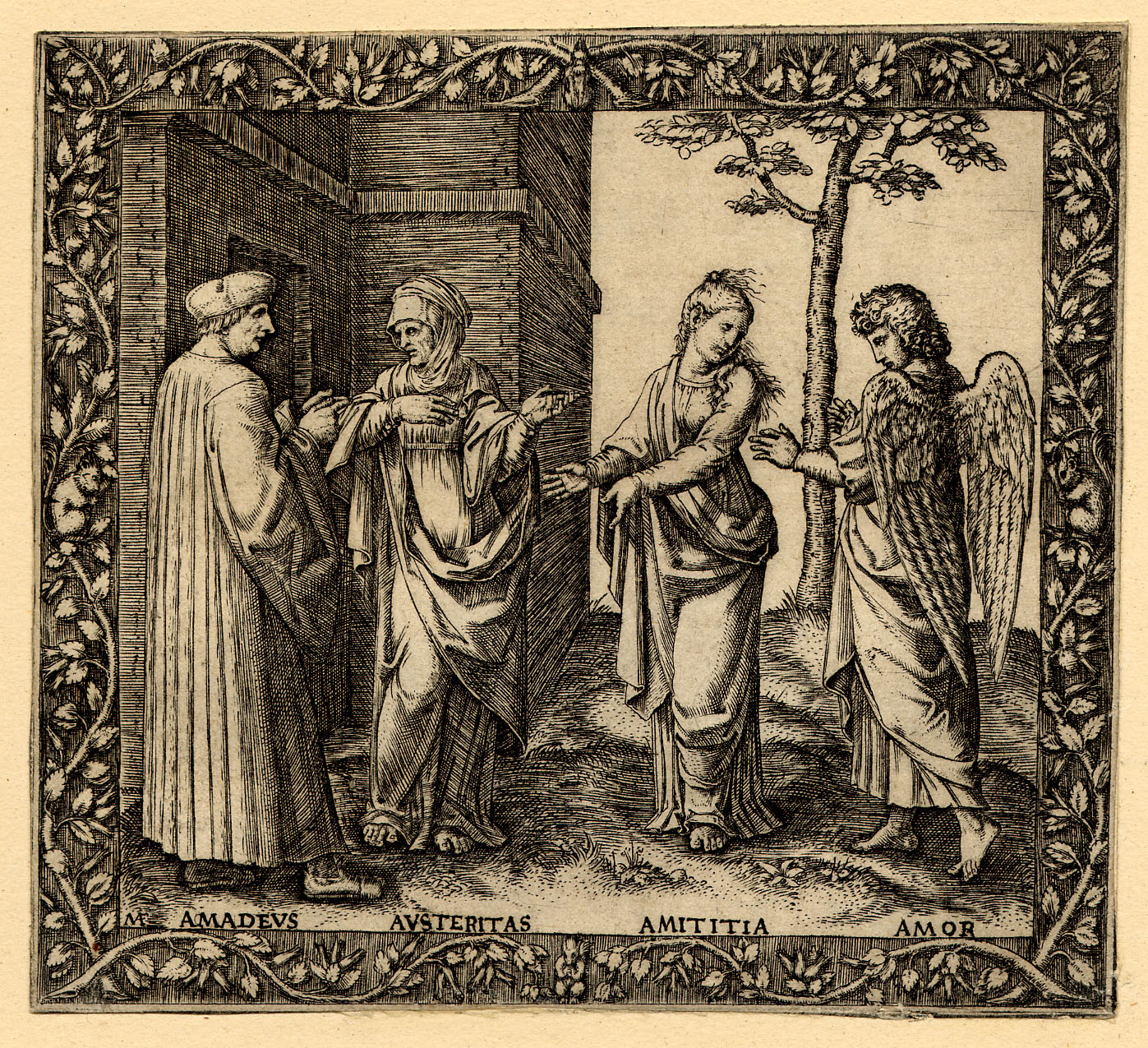Italy has a rich history of engraving traditions, beginning centuries ago and flourishing during the Renaissance, with the advent of pioneering techniques like intaglio engraving: an incised printing method that redefined the artistic landscape and established Italy as a cradle of unparalleled craftsmanship. Drypoint engraving — which involves scratching an image directly onto metal — also emerged as another transformative innovation during this period, further enriching Italy’s artistic legacy. Today, contemporary artists continue to draw inspiration from these cherished, centuries-old traditions, pushing the boundaries of engraving, as well as incorporating modern and digital methods.
The rise of intaglio engraving during the Italian Renaissance
During the late 15th and early 16th centuries, Marcantonio Raimondi became known as “Italy’s greatest master of engraving technique”. He was a pioneer of the intaglio engraving technique, in particular, which basically involves incising a design into a surface, creating depressions that hold ink for printing. Primarily, Raimondi translated existing paintings into prints, and is renowned for his collaboration with the iconic painter Raphael. Around 300 engravings are attributed to Raimondi — works characterized by intricate details, subtle shading, and a remarkable ability to capture the essence of the original paintings. One of Raimondi’s most famous works, the series based on Raphael’s paintings of the Vatican Stanze, known as the “Raphael Bible,” stands as a testament to his technical prowess. This series not only preserved Raphael’s artistic legacy, but also elevated the status of engraving as a respected and influential art form.
The emergence of drypoint
While intaglio engraving was popularized during the Renaissance, artists and printmakers sought ways to further innovate and enhance their artistic expressions. Drypoint engraving emerged as one such innovation. Unlike traditional intaglio techniques, where the image is incised directly onto the plate with a hard-pointed needle, drypoint involves scratching the image onto the plate. This process creates a raised burr along the incised lines, which contributes to the rich, expressive lines characteristic of drypoint prints. Drypoint provides a softer, more delicate appearance compared to the sharper lines of intaglio.
In particular, Italian artist and architect, Giovanni Battista Piranesi (1720–1778) is famous for his intricate and atmospheric etchings, including works created using the drypoint technique. His gorgeous series “Carceri d’invenzione” (Imaginary Prisons) features elaborate architectural compositions — more fantastical than practical. The use of drypoint allowed Piranesi to achieve a rich, velvety quality in the lines, contributing to the dreamlike and mysterious atmosphere of the prints. “Vedute di Roma” (Views of Rome) is another popular Piranesi engraving series, particularly celebrated for its technical mastery and dramatic use of light and shadow. Through the use of drypoint technique, Piranesi successfully rendered fine details in the cityscapes, including the facades of buildings, monuments, and the play of light and shadow on various surfaces. The burr created by the drypoint process also added an atmospheric, textured quality to the skies, enhancing the dramatic effects and overall mood of the scenes.
Contemporary resurgence: blending tradition and innovation
While Italian engraving has deep roots in tradition, contemporary artists continue to push boundaries and explore innovative techniques. Metal embossing, for example, involves creating raised patterns or designs on a metal surface through pressure or tooling. This technique results in an attractive 3D relief on the metal, and is usually used for decorative purposes, creating textured and raised designs. Alternatively, some contemporary artists are combining traditional intaglio techniques with modern digital processes, demonstrating a seamless integration of old and new methods. Italian artist Francesco De Molfetta, for instance, experiments with digital tools while preserving the essence of the age-old craft of engraving. With digital drawing tablets, De Molfetta can draw directly onto the digital surface, mimicking the tactile experience of traditional drawing and engraving tools. This direct interaction provides a more intuitive and natural feel to the creative process, and results in interesting designs that fuse old-world charm with modern sophistication.
The history of engraving traditions in Italy is rich and fascinating, reflecting centuries of artistic evolution and innovation that have profoundly shaped the cultural and visual heritage of the country. Traditional engraving techniques like intaglio and drypoint, as well as modern, digital methods, continue to showcase Italy’s enduring commitment to blending heritage with contemporary creativity.


